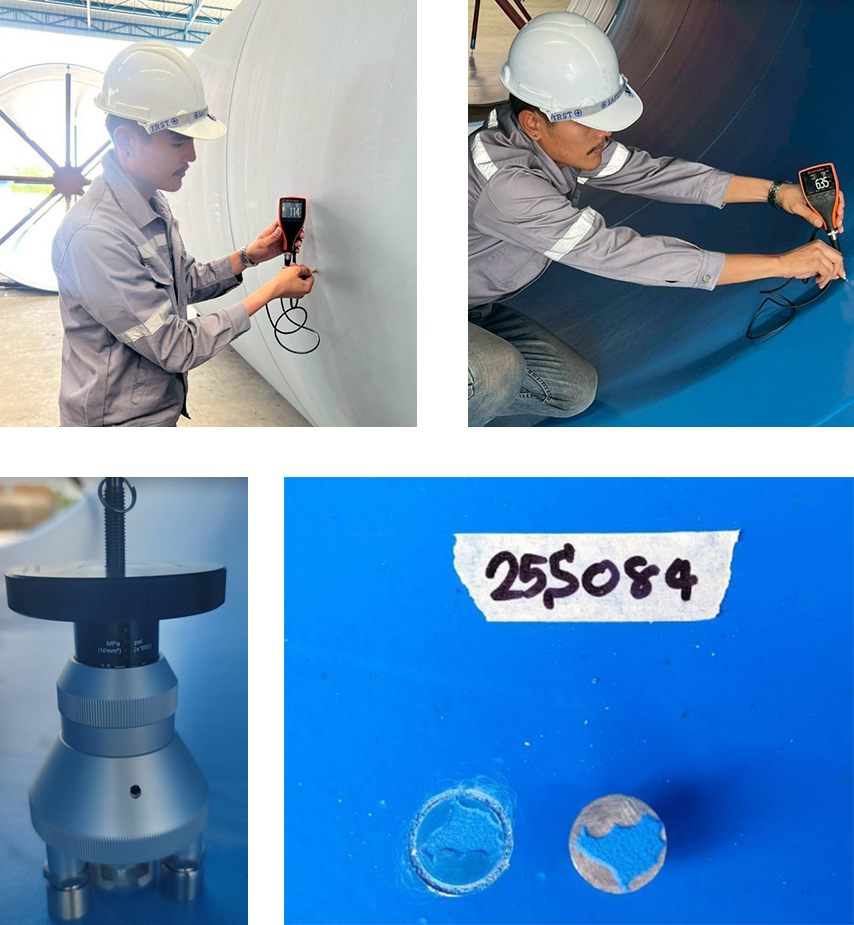Step 1 : Prepare the steel sheet.
Selecting quality steel coils (Steel Coil) where the steel coils used must meet production standards or must be in accordance with customer specifications. When the steel coils are obtained as desired, the steel coils are unrolled and moved along the production line.
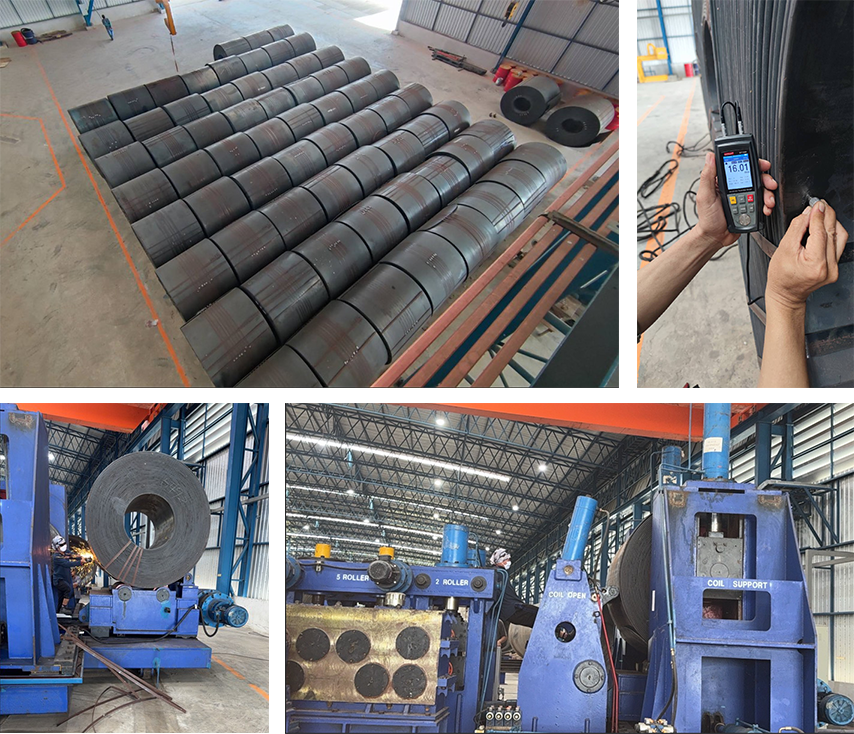
Step 2 : Shaping
The steel coils (Steel Coil) when unrolled will be conveyed and rolled by several sets of rollers to be smooth and the steel sheets will be rolled into cylinders by the pipe rolling machine (Spiral Pipe Rolling Machine).

Step 3 : Welding
The interlocking steel edges are welded together, both inside and outside.
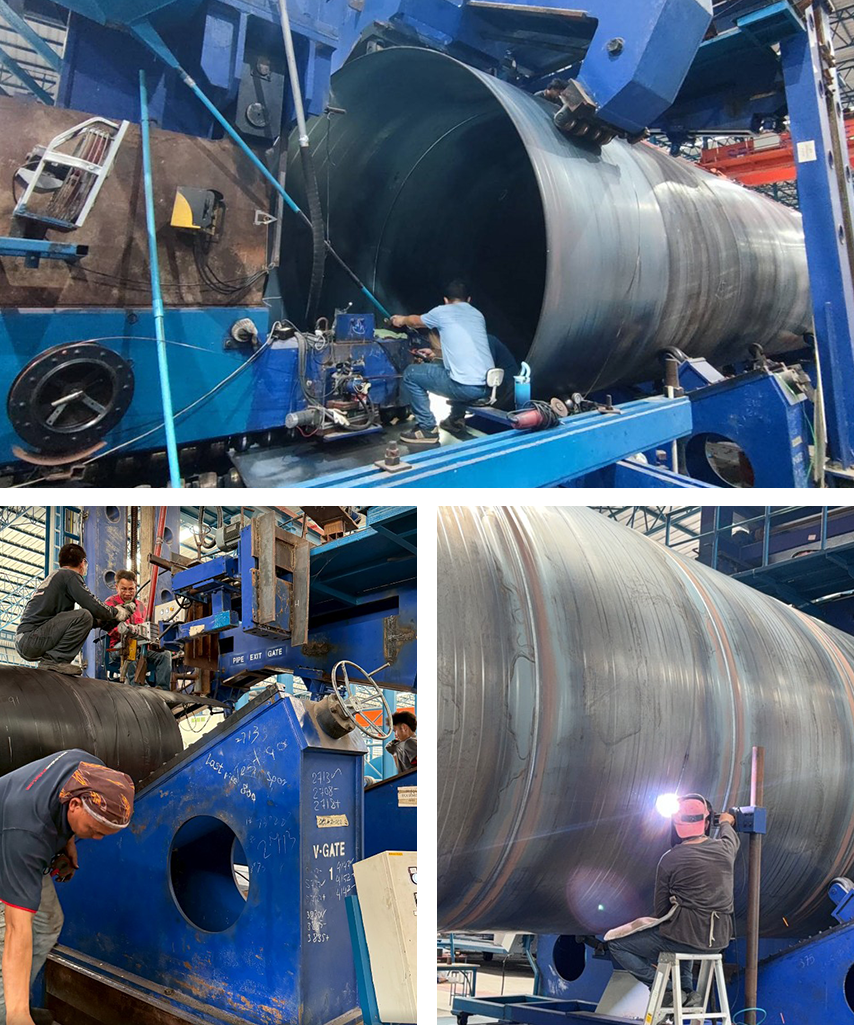
Step 4 : Verification
Steel pipes that are being formed are inspected periodically for weld seams, pipe surfaces, and pipe diameters. If any defects are found, they are marked and sent for further adjustment. If no defects are found, the finished steel pipes are cut to the required length.
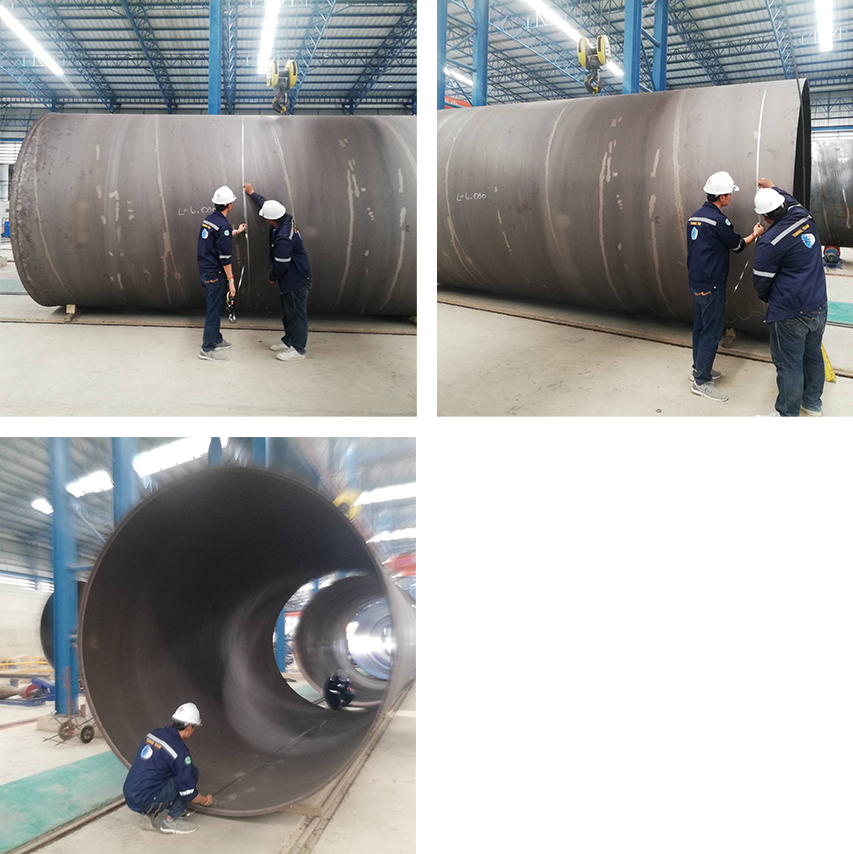
Step 5 : Customization
After welding, if the weld seam, pipe surface and pipe size do not meet the requirements, it will be adjusted to obtain the required pipe.
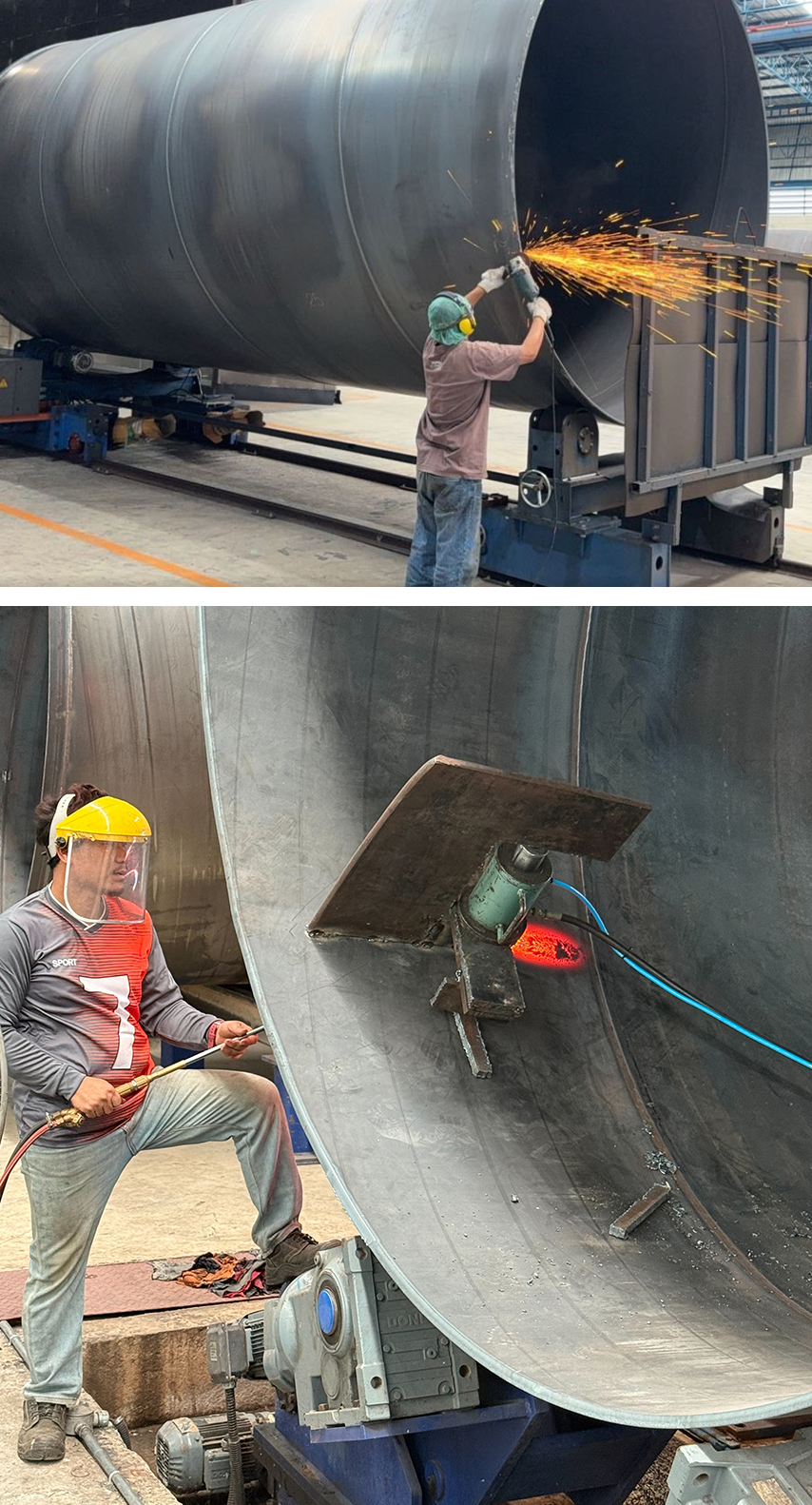
Step 6 : Testing
The formed pipes are then transported to a hydrostatic tester to test whether the formed pipes can withstand water pressure as specified/standard.
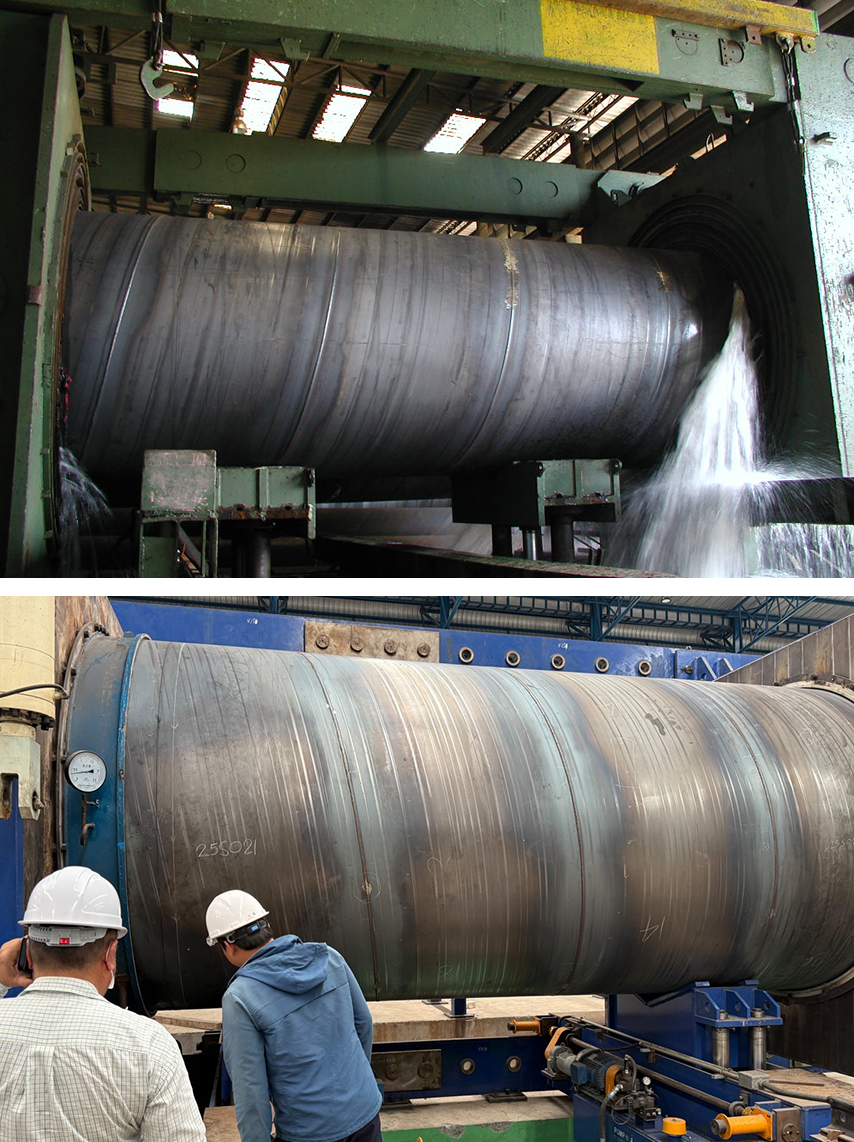
Step 7 : Surface preparation
Once the steel pipes have passed the water pressure test, they are transported to the surface preparation station where steel grit is sprayed to ensure that the pipe surface can be properly coated at the next station.
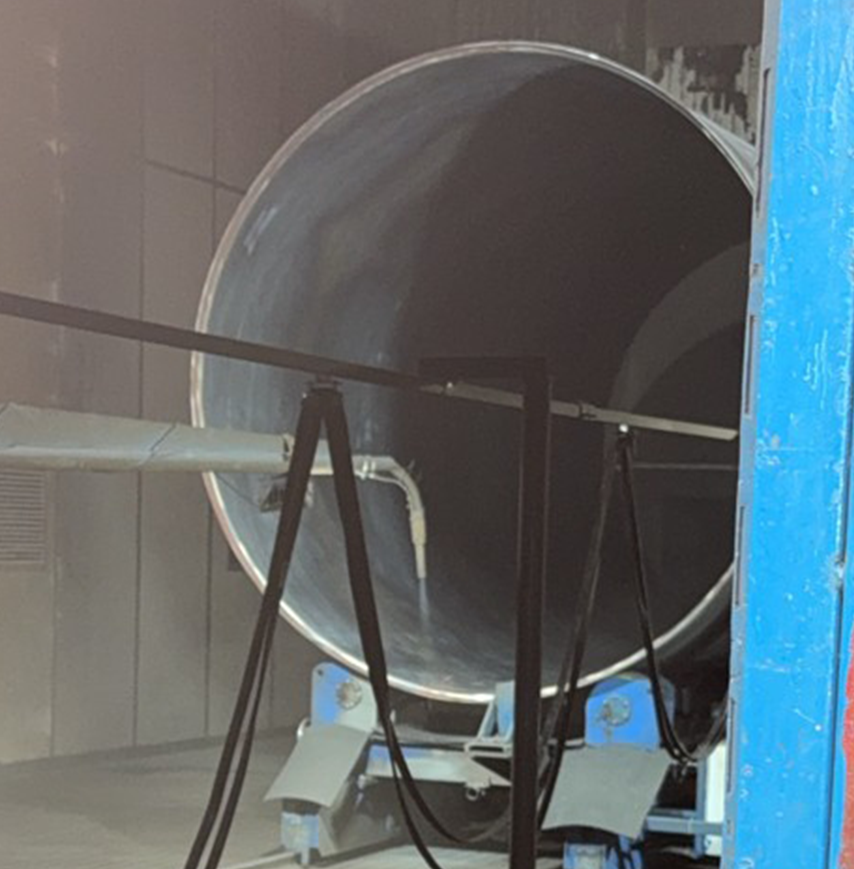
Step 8 : Coating
If steel pipes require a coating to meet specifications, they will be transported to be coated to prevent corrosion, in accordance with the standards for coating pipes that have been established, such as the type of paint, the thickness of wet paint - dry paint after spraying, in order to meet customer specifications / production standards.
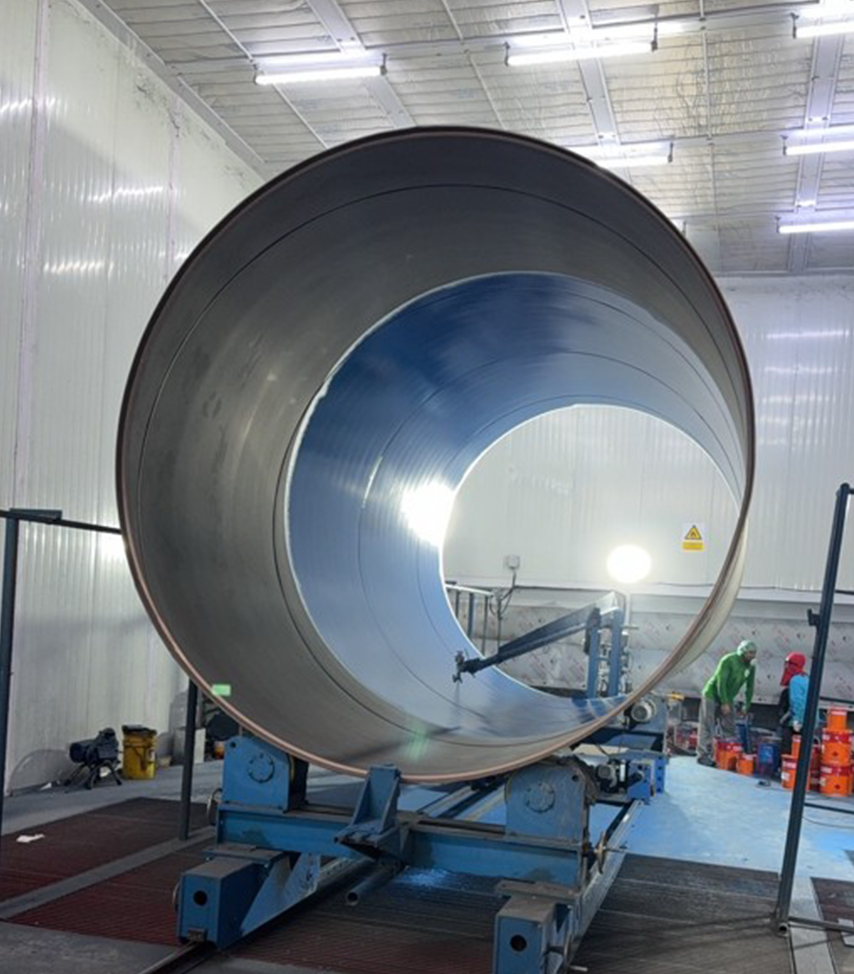
Step 9 : Verification
Once the pipe has been coated, it will be inspected for quality and neatness again, such as the size of the pipe, the thickness of the paint (Dolly Test), testing for leaks in the coating material (Holiday Detector Testing), the neatness of the pipe surface, etc. If any points needing correction are found, they will be sent back for correction. If no points are found, the pipe mouth will be supported to maintain the shape of the pipe and prepare for delivery. The product may be stored in the prepared pipe stock area.
